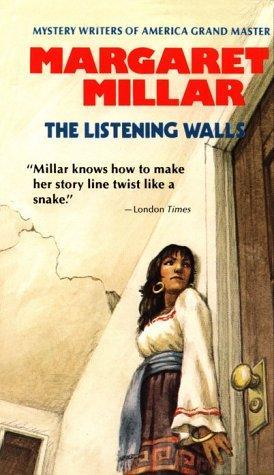The Listening Wall (1959) by Margaret Millar
GoodReads meta-data is 236 pages rated 3.83 by 220 litizens.
Genre: krimi
Verdict: ingenious but talky.

Setup: two mismatched women from San Francisco, one reticent and hesitant, the other assertive and aggressive, take a holiday together in Mexico City where one of them dies. Well, yes, dies, but was it an accident, a suicide, or a murder. If the latter, who dun it? If suicide, why dun it? If accident, how come? These are the questions around which the plot unwinds.
The plot thickens when after this ordeal, the survivor returns home to San Francisco only to disappear almost immediately. Her husband says she has gone east to recover from the trauma while he has to stay in Bay City to work.
Hmmm. The missing woman’s brother never liked the husband and finds gaps in this story, hiring a gumshoe to investigate, who also finds gaps but is less inclined to leap to conclusions than the brother who by now has bought a gun.
It all started in the Mexico City hotel room and the action returns there in the end to a rather convoluted conclusion that is typical of the psychological interiors Millar so expertly explored. I did not find the villain entirely credible or even worth the bother, but it ties up the title nicely.
Millar’s books won many awards, and it is easy to see why. The prose is effortless (and I can only guess how hard it is to achieve that) and the insights into the minds of the characters are surgically judicious. Even though I did not invest in any of the characters, they offer an array of different people and the motivations of each are, well, distinctive and credible. Millar also has an eye for the telling detail to make Sherlock Holmes take note. Not a cardboard plot device among them. Except possibly the villain, though much space is expended trying to round out the villain’s character without success for this reader.

In 1965 Millar received the ‘Woman of the Year Silver Cup’ of the Los Angeles Times. During its existence between 1950 and until the endowment ran out in 1977 the award was presented to almost 300 women to honour achievements in science, religion, the arts, education and government, community service, entertainment, sports, business, and industry. Other recipients include Lily Tomlin, Irene Dunn, and Anäis Nin.

